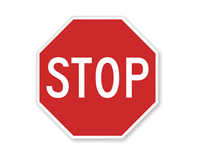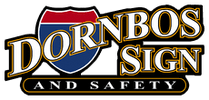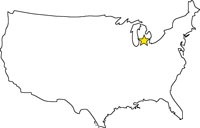What Size do Stop Signs Installed on Public Roads Need to Be?
Posted by Jeffrey Dornbos on 25th Aug 2016

Everyone knows a stop sign when they see one: eight sides, cherry red, massive white capital letters spelling out S-T-O-P. Designed to be quickly and easily spotted, and intended to be a symbol universally recognized, stop signs are even identifiable from the back.
Stop signs are a type of regulatory sign, which means they are used to inform drivers and pedestrians about selected traffic laws or regulations. More specifically, stop signs are used to control conflicting traffic and they assign right-of-way to one direction of traffic.
When and Where are Stop Signs Used?
The Manual of Uniform Traffic Control Devices (MUTCD) provides a number of rules and guidelines to be followed when installing stop signs. For example, stop signs must be visible and legible at all times. The MUTCD explains when and where stop signs should be used, and says that they should only be used if engineering judgment specifies one or more of the following circumstances exist:
- When there is an unsignalized intersection in a signalized area
- When there are high speeds, a restricted view or crash records show the need for control which can be helped with a stop sign
- On a street leading into a through street or highway
- At an intersection of a less important road with a busy or main road
At intersections that do not justify the installation of a traffic signal or a roundabout, but have conflicting traffic movements present, stop signs might be put in place. Stop signs are commonly found in residential areas or near places where children are frequently found. They are also installed in places where there is a high frequency of car crashes.
MUTCD Stop Sign Size Requirements
Stop signs are available in a variety of sizes, including:
- 18” x 18”
- 24” x 24”
- 30” x 30”
- 36” x 36”
- 40” x 40”
The size requirement of a stop sign depends on location. For example, 18” x 18” stop signs are found on bikeways and shared-use pathways.
The MUTCD provides size requirements for stop signs. They are as follows:
- 1.24” x 24” is the ideal size for stop signs used in parking lots and on private roads
- 2.30” x 30” is the minimum stop size requirement for official roadways
- 3.30” x 30” is the required size for stop signs located on single and conventional roadways
- 4.36” x 36” is how big stop signs are required to be when in place at a multi-lane approach
- 5.36” x 36” is the size requirement for stop signs located at dangerous intersections
- 6.On expressways, stops signs must be 36” x 36” or larger
- 7.48” x 48” is considered oversized for stop signs and is used in situations where speed, volume or other factors require the need for increased noticeability
Order Your Stop Signs from Dornbos Sign & Safety, Inc.
Dornbos Sign & Safety, Inc. supplies a selection of stop signs in every size, including:
- 12” x 12”
- 18” x 18”
- 24” x 24”
- 30” x 30”
- 36” x 36”
We also sell “All Way,” “4-Way” and “3-Way” signs to accompany stop signs. All of the signs we supply are made in the U.S.A. Dornbos Sign & Safety, Inc. offers signs in 3 grades of prismatic sheeting, including: Engineer Grade Prismatic, High Intensity Prismatic and Diamond Grade.
If you would like to view our entire collection of signs in more detail, visit our website. If you have questions and would like to speak with a member of our knowledgeable staff, reach out to us today by calling 517-543-4044 or by filling out our online contact form.




